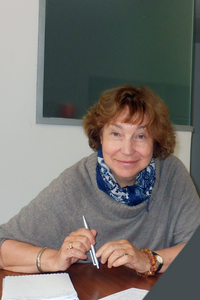Polyphony of Forms in Mexican Cinema: the Author’s Style of Alfonso Cuarón
https://doi.org/10.46272/2409-3416-2023-11-2-126-137
Abstract
This article examines some of the distinctive features of the style of Alfonso Cuarón, one of the most prominent filmmakers of our time. A comparison of different periods of his work allows us to draw a conclusion about the diversity of artistic forms of his cinematography, which he himself calls «eclecticism». At the same time, the cultural analysis of the Mexican director’s filmography proves that his creative concept has always been related to the most essential aspects of life, imbued with existential philosophy motives, whereas his ingenious techniques only serve as a tool for their profound comprehension. The inexhaustible arsenal of professional methods and techniques, Cuarón’s commitment to experiment, as well as his insatiable creative passion combined with the author’s constant attention to the most crucial aspects of reality generate an incredible variety of cinema forms, creating a unique artistic structure, which is the author’s style of Alfonso Cuarón’s cinematography.
About the Author
L. V. RostotskayaRussian Federation
Lidia V. Rostotskaya - Senior Researcher of Institute of Latin American of RAS.
115035 Moscow, Bolshaya Ordynka street, 21
References
1. Berd R. (2021) Andrei Tarkovskii: stikhii kino [Andrei Tarkovsky: The elements of cinema], Muzei sovremennogo iskusstva «Garazh», Moscow, Russia. 359 p. (In Russian)
2. Boussinot R. (1986) L’Enciclopédie du cinema (2 volumes) [The Enciclopedia of Cinema (2 volumes)], Bordas, Paris, France, 1335 p., 1800 p. (In French)
3. Buñuel L. (1989) Bunyuel’ o Bunyuele. Moi poslednii vzdokh [Buñuel on Buñuel. My Last Breath], Raduga, Moscow, Russia, 384 p. (In Russian)
4. Buñuel L. (2021) Smutnyi ob”ekt zhelaniya [Vague object of desire], Zebra E, Moscow, Russia, 432 p. (In Russian)
5. Dularidze L.G. (1979) Luis Bunyuel’ [Luis Buñuel], Iskusstvo, Moscow, Russia, 295 p. (In Russian)
6. Garcia Riera E. (1962–1998) Historia documental del cine mexicano [Documentary history of Mexican cinema], tt.1–18, Ediciones Era, Mexico, Mexico. (In Spanish)
7. Rostotskaya L.V. (1980) Kinoiskusstvo Meksiki [Mexican cinema art] in Kuzmischev V.A. (ed.) Kul’tura Meksiki [Mexican Culture], Nauka, Moscow, Russia, pp. 226–247. (In Russian)
8. Rostotskaya L.V. (2009) Mezhdu dvumya mirami: Bunyuel’ v Meksike [Between two worlds: Buñuel in Mexico], Latin America, no. 6, pp. 95–103. (In Russian)
9. Sadoul G. (1963) Vseobshchaya istoriya kino. V 6 tomakh [The Universal History of Cinema. In 6 volumes], Iskusstvo, Moscow, Russia, 610 p., 523 p., 628 p., 528 p., 557 p., 468 p. (In Russian)
10. Toeplitz E. (1968–1974) Istoriya kinoiskusstva. Tt.1–4 [History of Film Art. Vol. 1 4], Progress, Moscow, Russia, 336 p., 280 p., 271 p., 316 p. (In Russian)
Review
For citations:
Rostotskaya L.V. Polyphony of Forms in Mexican Cinema: the Author’s Style of Alfonso Cuarón. Cuadernos Iberoamericanos. 2023;11(2):126-137. (In Russ.) https://doi.org/10.46272/2409-3416-2023-11-2-126-137


























